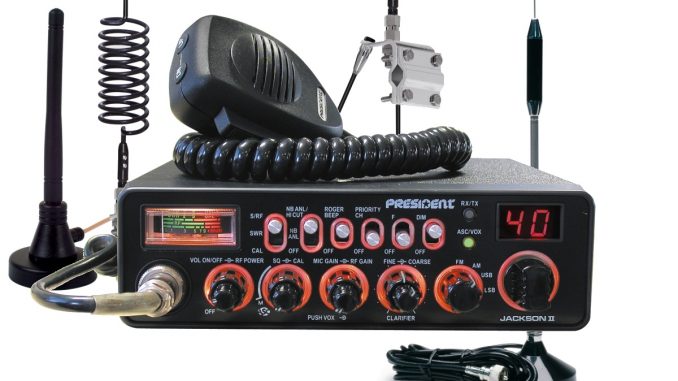
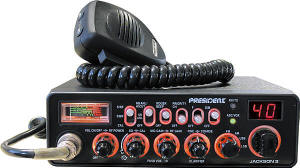
There’s nothing more frustrating than being out on the trail and realizing that your CB is not performing very well. People in other nearby vehicles can barely make out what you are saying and incoming reception is difficult to make out. At one time or another, we’ve all been there.
So what’s wrong with your CB? Is it the mic? Is the antenna out of adjustment or is the CB just a cheap piece of junk. Well we can’t help you with a poor purchase but we can highlight some points that you can check to get the most out of your CB. 95% of all troubled CB come down to a few basic problems that can easily be corrected and in return give you much better transmission and reception and quite possibly save your CB from self destruction! Plus, with a properly installed CB and properly installed and adjusted CB antenna, even the cheapest CB’s will perform well enough for close range vehicle to vehicle communications.
Below are some basic CB installation, setup and tuning tips. In this article we’re not getting into theory and radio wave technical explanations, we’ll save that for some articles. We will just keep it plain and simple and to the point.
What’s in this article:
- CB Radio Installation
- CB Antenna Mounts
- CB Antennas
- CB Antenna & Radio Tuning
CB Installation
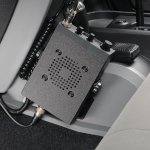
Mounting the Set – CB’s vary in size and shape as do the vehicles they are installed in. Where you install the CB itself is only important in regards to its ease of access and the orientation of the speaker so you can hear it. Most CB’s have the speaker located on the underside so for that reason, an overhead installation will generally give you the best sound quality as well as access and visibility to the controls. But overhead may not be an option and determining a mounting location is not always easy. If you are mounting under the dash or on either side of the center console, just make sure you have enough leg clearance. There are many companies making CB mounting mounting brackets, some of which are vehicle specific for some trick installation locations.
Mic Brackets – Most sets come with a mic mounting bracket that often can be attached to the side of the CB itself. If that’s not convenient, consider attaching the mic mount nearby the set in a easy to reach location. Last thing to consider when choosing the mounting location is how you will run the CB’s coax cable out to the antenna. Consider your cable routing when choosing your set mounting location.
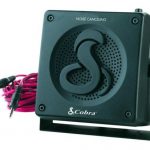
Remote Speaker – If mounting the set in your preferred location orients the speaker so you can’t hear it so well, consider an external remote speaker box. Most CB’s have a speaker jack in the rear of the set. You can purchase a small CB radio remote speaker that use a male mono audio plug. Sometimes even a small speaker mounted in a convenient location will do. Personally I have a CJ-7 with a large Cobra 148 GTL CB mounted above in the roll cage. But my speaker is mounted in the dash using the old single speaker location in the CJ dash panel. The audio quality of this setup is great. Nice and loud with a better than average speaker behind the dash.
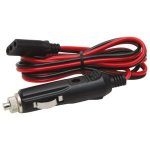
Power requirements – Most CB’s come with an inline fuse rated at 3 amps. Use the recommended fuse rating for your set. Do not use a fuse over the recommended rating. You are not doing your CB radio any favors by increasing the size of the fuse, your only asking for damage. Some CB’s even come with a 12v power supply plug (we used to – still do – call those cigarette lighter plugs). Your CB will run just fine off of the power from the 12v power supply plug but if you are mounting the CB permanently, you might want to consider wiring the CB into the accessory wiring harness. Not something we will get into here but we will say, keep the inline fuse in place and DO NOT hook up the polarity backwards! Hooking up the power backwards will probably burn out the protection diodes immediately. Red is positive 12 volts and black is ground.
CB Antenna Mounts
There are a myriad of CB antenna mounting options on the market. If you are reading this article, there’s a good chance you are going to go offroad with your vehicle. With Offroad in mind, there are good choices and bad choices in antennas and mounting options. Lets start with the antenna mounts.
Most antenna mounts fall into two categories, Magnetic CB Antenna Mounts and bolt-on Bracket Antenna Mounts.
Magnetic CB Antenna Mounts
A magnetic mount uses a large flat magnetic base to secure the antenna to a steel panel on the vehicle.
Pros – Popular, many options. versatile. Removable, non-permanent. Movable around on vehicle for better SWR adjustment, better reception, and avoidance of tree branches.
Cons – Easily knocked off (and under the wheel) by low hanging tree branches. Dirt can get lodged under the magnet and scratch the paint. Most magnetic mounts are base loaded, meaning most of the coiled antenna wire is low at the bottom, which in most cases means reception and output is less than what it could be. Only sticks to ferrous metal (steel hoods, not fiberglass Jeep tops). Sometimes hard to ground.
What to avoid – Avoid narrow magnetic bases. Narrow means easily toppled over. Wide and flat is better. Avoid stiff antennas with a magnetic base. Stiff will not flex easily on contact and will get knocked over. You will find very short stubby CB antennas no taller than a foot with a magnetic mount. Though they seem ideal for offroad use, avoid them. They are hard to adjust the SWR and get terrible range.
Magnetic Antenna Mounting Tips
- The wider the magnet, the better it will adhere to the vehicle.
- Using a base-loaded, very flexible whip antenna will stay on the vehicle better when you’re offroad.
- Route the antenna wire backward towards a rear window or door so it doesn’t get hooked by a tree branch.
- To preserve your paint, periodically pull the antenna magnet up and clear away dirt and water.
- Avoid using a stiff, fiberglass antenna with a magnetic mount.
- Offroad mounting tips: Move the magnetic mount to the hood or into the bed of a truck to prevent it from getting knocked off. Be sure to check the SWR in these mounting locations.
- For best performance, use an 18 foot coaxial cable between the radio and the antenna. Most magnetic antenna mounts come with a coaxial cable pre-attached.
- For single antenna installations, use 50 ohm (RG-58A/U) coax. For Dual or co-phase installations, use 72-75 ohm (RG-59A/U) coax.
- CB antennas are not plug and play. CB radio antennas must be SWR tuned to the vehicle and the final antenna location on the vehicle. When adjusting SWR, close the doors on the vehicle to get the most accurate adjustment.
Bolt-on Antenna Mounting Brackets
Bolt on brackets include a wide variety of bolt-on antenna mounts that come in all kinds of custom designs for various locations on the vehicle. Some are even designed for specific vehicles. Hood mounts, corner mounts, vehicle specific location mounts, even rollbar and roof rack mounts.
Pros – Permanent, fixed location. Worry free, will not get knocked over or off the vehicle. Good grounding.
Cons – Permanently mounted, may require drilling. Challenge to find a location. Hit or miss ground plane.
What to avoid – Avoid mounting the antenna too low and too close to the vehicle. Ideally, keep 2/3 of the antenna above the roof height.
Bolt-on Antenna Mounting Bracket Tips
- Try to keep at least 2/3 of the antenna above the roof of the vehicle for best performance.
- Mounting a flexible antenna too close to the body can cause it to make contact with the body and can cause SWR and/or performance problems.
- For single antenna installations, use 50 ohm (RG-58A/U) coax. For Dual or co-phase installations, use 72-75 ohm (RG-59A/U) coax.
- CB antennas are not plug and play. CB radio antennas must be SWR tuned to the vehicle and the final antenna location on the vehicle. When adjusting SWR, close the doors on the vehicle to get the most accurate adjustment.
CB Antennas
The most common, versatile CB antennas come as steel whips and fiberglass tube antennas of various heights. Most common antennas use the quarter wave length (about 9 feet) with most of the antenna wound up as a coil. This coil can be located within the base (Base-Loaded), partially up the antenna (Center-Loaded), near the top (Top-Loaded ), or wound up most of the length of the antenna (Continuous Loading). There are quite a few more antenna types, lengths and configurations but for the mast part, 4×4’s will use one of these types. Steel Whip antennas are nice because they flex well and most steel whip antennas will have a base-loaded coil keeping the bulk of the antenna away from branches. Fiberglass antennas will flex somewhat but coupled with a spring mount, will resist damage. Some fiberglass antennas have the benefit of being center-loaded and top-loaded putting most of the antenna as high as possible for better output and reception. Though not unbreakable, fiberglass is strong and light-weight. Center-loading or top-loading a steel antenna adds additional weight or bulk to the center or top of the antenna, which is not ideal for off-road use.
CB Antenna Tips
- Ideally a 4×4 should use a very flexible antenna or at least a spring mounted antenna to avoid antenna damage.
- The taller the antenna is on the vehicle, the further the signal output will reach.
- Antenna types: Base-Loaded, Center-Loaded, Top-Loaded and Continuous Loading.
- Most all-in-one CB antennas come with a length of coax cable. Most will have about 18 feet of cable. There is good arguments to the 18 foot length.
- When dealing with excess antenna coal cable length, do not coil the wire tightly tucked away. This can cause poor SWR readings. Instead loosely lay the excess coax broad and spread out if possible.
- Buy an SWR meter and learn how to use it. After installing your CB and antenna, use the SWR meter to adjust your antenna and tune it to the CB and the vehicle. While a properly tuned antenna will result in strong radio performance, failing to properly tune your antenna can result in poor performance and can even damage your radio from excessive radio frequency heat that is reflected back into the radio instead of transmitted out.
- Comparing a taller antenna to a shorter antenna: 4 watt input into a 4 foot antenna yields the same broadcast power as 2 watts into a 102-inch whip antenna. For more comparisons, read this.
CB Antenna Coil Location
All CB antennas shorter than a 102-inch whip have a coil. The wire in the coil is the remainder of quarter wave (102 inches) minus the height of the antenna itself wrapped up in a tight or spread out coil. The location of the coil affects output because the higher the coil is on the antenna, the higher the bulk of the antenna is in relation to the ground and the vehicle. Higher is better. Antennas can be base-loaded, center-loaded, top-loaded or continuous-loaded. How do you identify what type of antenna is what?
Base-Loaded – Base loaded antennas have the bulk of the antenna at the bottom of the antenna within a sealed plastic base, usually attached to the magnet or secured to the roof of the vehicle. Most magnetic mount antennas are base loaded due the weight and bulk of the coil. Base loaded antennas can have a high wattage output rating though this is not a consideration for average CB users since all CB’s are sold with a 4-watt output limit.
Center-Loaded – Center loaded antennas usually have the coil further up the antenna but not always in the center. Center loaded antennas will generally have a thicker steel shaft up to the coil for support. center loaded antennas are usually used on semi trucks.
Top-Loaded – Top loaded antennas are very common and inexpensive yet are also the most efficient. Most have a lower wattage rating but again, this is not a concern for average CB users since all off the shelf CB’s will have a 4-watt limit. Top loaded CBs are usually fiberglass construction with a thin wire wrapped around the fiberglass pole and covered in a protective layer of vinyl plastic. The thin wire is wrapped tighter towards the top placing most of the wire near the top. Benefits of a top-loaded fiberglass antenna is that option to mount the antenna lower on the vehicle yet placing most of the antenna higher, hopefully above the roofline of the vehicle.
Continuous-Loaded – Continuous loaded antennas are very similar to top-loaded antennas in their construction with the exception of the wire distribution over the shaft. With continuously loaded antennas, the wire is not concentrated towards the top or bottom, but rather distributed evenly over the entire length of the shaft. There is very little benefit to continuous loading vs top loading.
Running the wire from the Antenna to the CB
When installing a CB, you have a long coaxial cable that runs from the CB to the antenna. Typically this is about 18 foot of cable, which according to some theory, is the optimal length of cable to use regardless of how close the antenna is to the CB. So if you have 18 foot, you probably have some or a lot of extra cable to deal with. Don’t wrap it up wire-tied in a tight coil. This will cause performance issues. Instead spread out the wire loosely in broad lengths. Route the cable out of the way as good as possible. If the antenna is in the rear of the vehicle, that can be a challenge. Under carpet, along the door jam, under the seats, along the roll cage are all common ways to route it.
Antenna SWR Adjustment – CB Radios are NOT Plug and Play
The last thing you’ll need to do after installing the CB, coaxial cable and the antenna is tune the antenna to the CB and the vehicle. With this you’ll need an SWR meter to measure SWR (Standing Wave Ratio) and adjust the antenna height to tune for the best SWR reading that you can get.
DO NOT Key up the mic (push to transmit) without an antenna attached to the CB! This can result in a damaged CB.
If you don’t have one, it’s a good investment to buy an SWR meter. They are not expensive and it’s worth the money to be able to adjust yours and your buddy’s CB antenna. You’ll have better transmission and it can save your radio from damage.




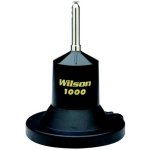
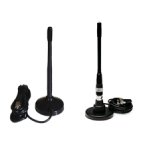
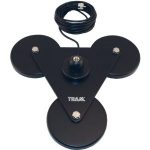




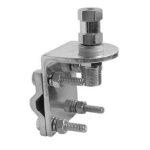

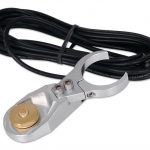
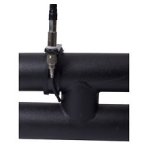
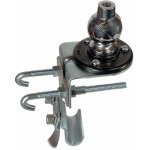

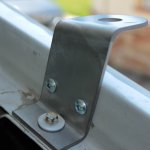
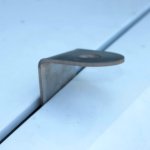
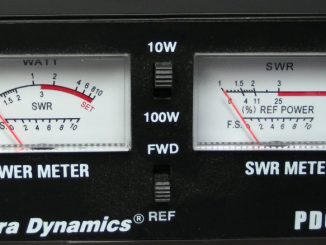
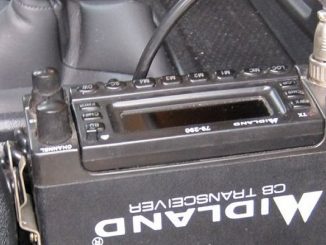
How do I ground my radio without all the electrical interference
I am looking for a video on how to install (mount) CB radio into the ceiling of Toyota Tacoma truck or any kind of truck. Anybody got any HELP?
yep good summery, but I am looking for a way to install a quick release setup. I do not want to leave the CB in my car all the time. I just want a plug and go install. If I tune this thing does it matter if I remove it and return it to the set up in the morning? …or do I have to tune the thing all over again.
Doran,
I’ve used a few different brackets over the years that were somewhat easy to release the CB radios in my 4×4’s. One was a bracket, which is quite common and included with most CB’s had an open end on open side and the CB had hand tightened knobs that I would release the CB when I wanted to take it out. With this setup, I’d disconnect the power with a rubber two conductor quick disconnect (pull to disconnect) and the antenna wire coupling. I would advise against using a quick disconnect on the antenna’s coaxial cable. I’ve tried these with a bad effect on the SWR adjustment. It’s easy enough to unscrew the antenna coaxial cable. As long as you do not change the coaxial cable length and do not disturb how you routed the coaxial cable, your SWR should remain the same. If you adjust your SWR to optimal and later want to remove the radio, you may want to remove the antenna too. If you remove the antenna make sure you put it back in the same place you had it and route the wire exactly like you had it or the SWR may change from the original setting.
if the antenna has an open wire and a transmission is attempted will it cause any damage to the radio??
An open wire is very much like keying up without the antenna. The RF energy doesn’t have an outlet and gets reflected back into the radio, quickly overheating the final stage amplifier transistors.
Good summary and fun read of the CB radio. I was big into CB’s back in the 1980’s and still today I use one in my Jeep for communicating with others in the group.
Very useful tips in this particular article! It’s been years since I used a CB but with getting back into Jeeping after all this time, I got a Cobra. Thanks